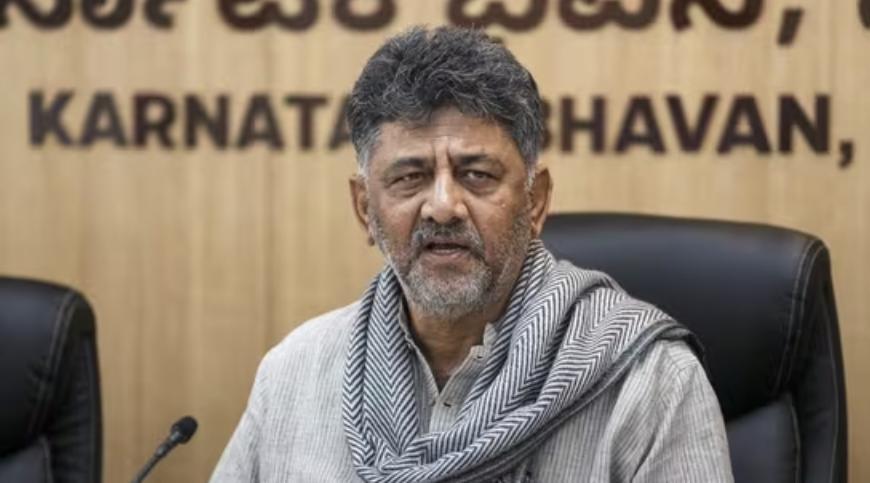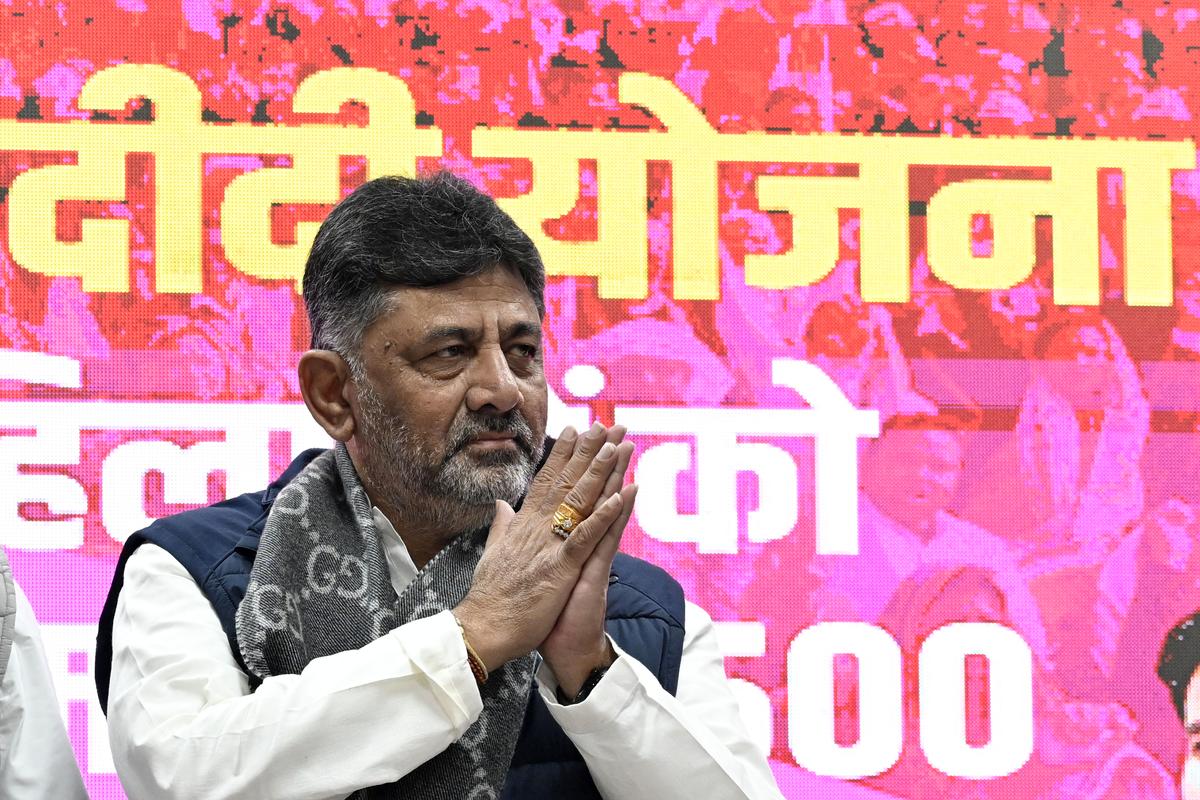A single social media post by Deputy Chief Minister D.K. Shivakumar this week has reignited debate, speculation, and cautious optimism across Bengaluru — a city whose patience with Metro construction has worn thin from years of shattered timelines and traffic chaos. The post, seemingly celebratory, claimed that the entire Pink Line of Namma Metro would be operational by May 2026. But just as the excitement spread online, confusion quickly followed. Was this official confirmation of a revised deadline, or yet another optimistic projection in a history littered with delayed promises?
The Pink Line, officially known as the Kalena Agrahara–Nagawara corridor, has long been pitched as Bengaluru’s north-south connector, cutting a swath through the city’s most congested arteries — JP Nagar, Dairy Circle, MG Road, Shivajinagar, Pottery Town, and beyond. Once completed, the 21.3-kilometre stretch will link the southern suburbs to the tech-heavy northern corridors, reducing commute time for thousands of daily travelers. More crucially, it will serve as a lifeline for the city’s choking road network, which now records one of the worst average traffic speeds in India.
However, what should have been a straightforward announcement turned contentious within hours. Senior officials from the Bangalore Metro Rail Corporation Limited (BMRCL) declined to publicly endorse the May 2026 deadline, noting that several civil and systems contracts are still awaiting full integration. Internal progress reports, meanwhile, indicate varying stages of completion: while tunnelling in some stretches stands above 90 percent, work in others, especially around Shivajinagar and Cantonment, remains at least eight months behind schedule.
As the confusion deepens, one thing is certain — Bengaluru’s urban consciousness has reached a point where every Metro milestone is met with both hope and skepticism. The Pink Line, painted in promise but clouded by uncertainty, now embodies the city’s eternal wait for movement amid motionlessness.

Cracks Beneath the Concrete: Where Deadlines Falter
For nearly two decades, the idea of a seamless Metro system has captured Bengaluru’s imagination — envisioned as the city’s redemption from gridlock. But translating that idea into dependable timelines has proven elusive. First conceptualized under Phase 2 of Namma Metro in 2014, the Pink Line was touted as the engineering jewel of the project — its twin tunnels winding through some of the busiest and geologically challenging zones in south India. The original completion target, set for December 2024, has already slipped twice due to delays ranging from land acquisition to technical alignment shifts.
D.K. Shivakumar’s announcement of a May 2026 launch reignited long-dormant debates about transparency and accountability. While the Deputy Chief Minister, who also holds the Bengaluru development portfolio, insists progress is on track, project engineers and urban planners remain divided. Insiders suggest that though much of the tunnelling between Lakkasandra and Nagawara is advancing steadily, completing systems integration — ventilation, signaling, track-laying, and safety certifications — will require sustained coordination and uninterrupted funding.
“Building tunnels is just half the story,” said a senior BMRCL engineer. “Installing and testing signaling systems, electrification, track welding, and final runs take almost as long. The rest of the work cannot be rushed merely to meet political optics.”
Of the 21 stations along the corridor, only six elevated ones — including Kalena Agrahara, Tavarekere, and Dairy Circle — are approaching structural completion. The underground network, particularly between Shivajinagar and Pottery Town, remains the most technically demanding, located beneath densely packed neighborhoods where subsoil conditions complicate boring operations. One tunnel-boring machine (TBM) named Rudra had reportedly encountered hard rock layers last month, forcing sequential delays.
What differentiates this project from earlier Metro lines is the sheer complexity of urban coexistence: ancient utilities, markets layered over narrow roads, and shifting foundations have forced engineers to innovate on the fly. “There’s no straight line in this line,” one planner quipped grimly. “Every inch comes with negotiation — between rock, pipes, and politics.”
Meanwhile, commuters navigating the mess above ground experience little empathy for such obstacles. Roads around Langford Town and Vellara Junction remain bottlenecked and dusty, while local businesses complain of falling footfall. “They said two years,” said shop owner Razia Begum, gesturing at barricades flanking her grocery store. “It’s already been three. Now they promise one more. We just want them to finish before our patience runs out.”
The confusion over deadlines also threatens political credibility. Ministers aim to showcase the Pink Line’s progress as a sign of urban revival under the current government, especially in the lead-up to the 2026 Budget year. However, experts caution that compressing construction timelines for political announcements could risk safety compromises. Chief engineers contend that despite challenges, the team remains committed to delivering “the city’s safest, most advanced underground corridor.”
Between Politics and Patience: Bengaluru’s Test of Trust
Transportation sociologist and city researcher Dr. Preethi Ramaswamy notes that the debate over Metro deadlines reveals something deeper than administrative miscommunication — it reflects Bengaluru’s fraying relationship with promises. “Every infrastructure project here begins as celebration and ends as argument,” she observed. “Citizens have become unconsciously conditioned to doubt official dates, not because they are cynical by nature but because they have witnessed consistent slippages.”
If completed as newly claimed, the Pink Line would add an estimated 9 lakh passengers daily to the Metro network — nearly doubling current ridership — drastically improving east-west and north-south connectivity through intersections with the Purple and Green Lines. But for that to happen, synchronizing completion of all 21 stations is critical. “If even a single underground hub lags, full operations cannot begin,” explained a systems planner familiar with Phase 2 timelines. “Partial inaugurations may create headlines, but long-term reliability depends on full functional integration.”
Adding to uncertainty is the challenge of funding continuity. Although the project is financed through a combination of state, central, and Japan International Cooperation Agency (JICA) assistance, minor delays in disbursement can affect imported components such as electrical systems and platform screen doors. BMRCL’s expenditure charts suggest that less than 60 percent of total sanctioned funding has been released for the current fiscal year — a signal that completion by mid-2026 may require accelerated fiscal decisions.

Deputy Chief Minister Shivakumar has chosen optimism as his strategy, emphasizing his determination to “gift Bengaluru its most beautiful Metro line” before his term ends. His recent post showcased visuals of completed tunnels and station designs under a caption celebrating progress. “Work is in full swing, and every possible milestone will be achieved for public benefit,” he wrote. Yet, behind the succinct promise lies the bureaucratic painstaking reality of multi-agency coordination — construction units, contractors, civic bodies, and utilities must all move in perfect rhythm.
BMRCL, while refraining from contradicting Shivakumar publicly, issued internal clarifications that “deadlines remain under technical evaluation.” Project Director Anil Kumar reiterated to the press that timelines would be finalized only after the final tunnelling breakthroughs, expected by early 2025. He maintained that “any statement on operational readiness before the end of system testing would be premature.”
The ensuing irony has not escaped observers — a transport project meant to unify the city has become a metaphor for its communication disconnect. Citizens’ online reactions captured that duality succinctly: memes celebrated the fantasy of 2026, while others lamented that Bengaluru’s Metro projects have perpetually stretched “beyond schedule, budget, and belief.”
Still, amid the skepticism, the anticipation is palpable. Few urban infrastructures stir as much emotional investment as Namma Metro, which despite delays, has transformed how millions commute daily. The evolving skyline, dotted with viaducts, stations, and cranes, stands as both testament and torment — evidence of a city in transition, straddling aspiration and hindrance.
Urban architect Rohit Subramaniam views the Pink Line’s importance as symbolic. “It’s not just another corridor. It’s the thread intended to stitch together Bengaluru’s north and south fractures,” he said. “Every missed month is another inch widened in that divide. But once the line opens, even a minute saved per citizen multiplies into lifetimes of regained time.”
At a larger scale, urban planners argue that Bengaluru’s future depends on how swiftly the Metro network scales up. With private vehicle ownership accelerating and road congestion unrelenting, the difference between a 2026 inauguration and a delayed rollout could alter the city’s next decade. Forecasters predict that if the Pink Line commences operations by mid-decade, traffic volumes on core routes like Hosur Road and MG Road could reduce by nearly 15 percent within a year.
As deadlines blur and optimism flickers, what remains constant is the city’s faith — bruised, yet unbroken. For thousands of citizens, timelines matter less than trust. “We’ve waited this long,” said a college student waiting at Majestic station. “If they can really give us this line by 2026, it’ll be worth every pause we’ve endured.”

By evening, D.K. Shivakumar’s post had amassed thousands of likes, hundreds of comments, and a torrent of questions. Officials, policy experts, and everyday citizens all seemed to be reading between the lines—literally and figuratively. In a city where transport promises often arrive ahead of trains, the date May 2026 now sparkles with both promise and pressure.
Whether it will become a turning point or another entry in Bengaluru’s long ledger of infrastructural hesitations remains to be seen. The Pink Line stretches silently under layers of rock and rhetoric, its tunnels holding more than concrete; they hold expectation, impatience, and perhaps, redemption.
And as night blankets the gridlocked roads above, undercurrents of machinery continue their relentless churn—each rotation drilling not just through stone, but through the weight of a city’s waiting.
Follow: Karnataka Government
Also read: Home | Channel 6 Network – Latest News, Breaking Updates: Politics, Business, Tech & More

